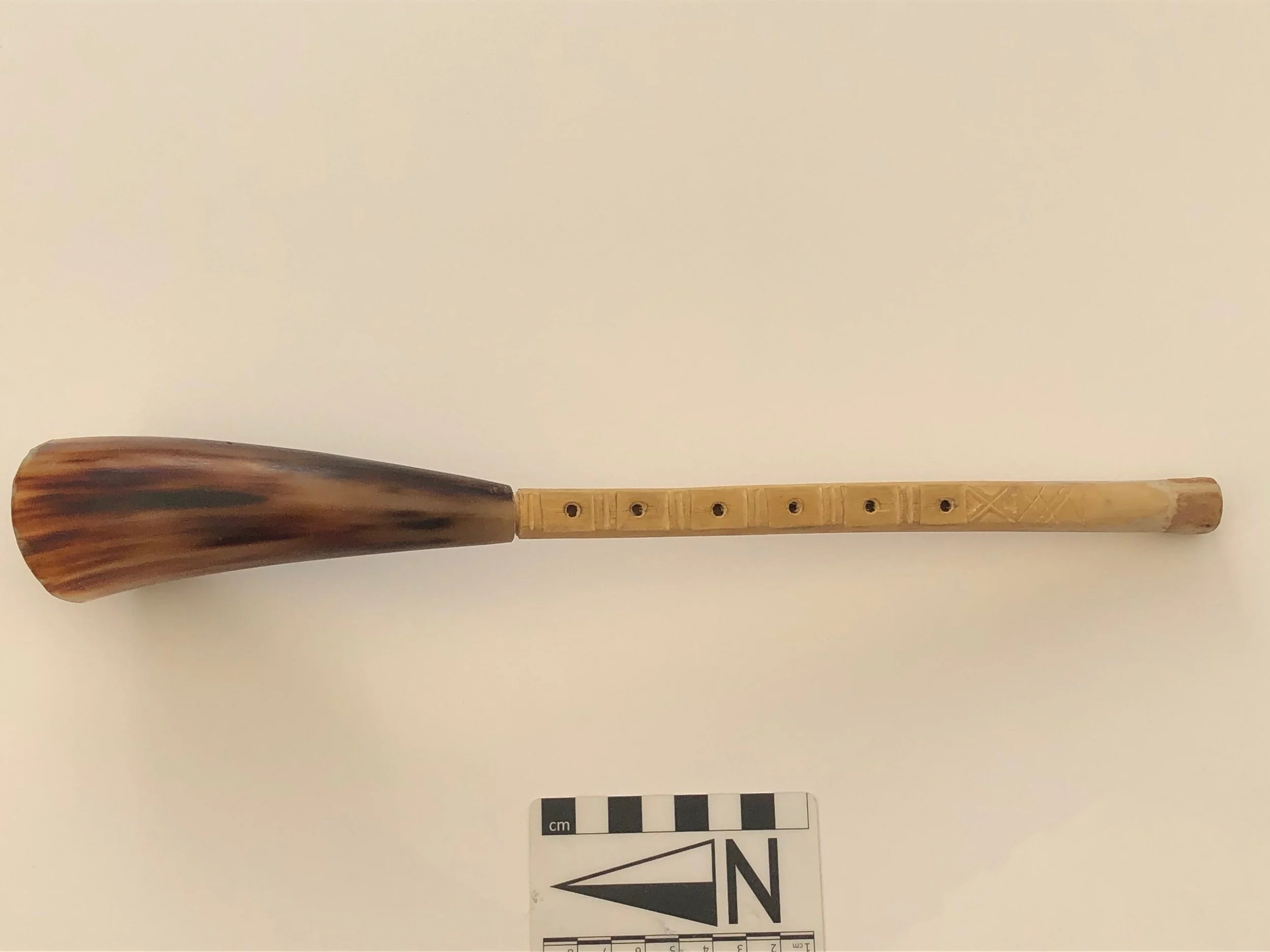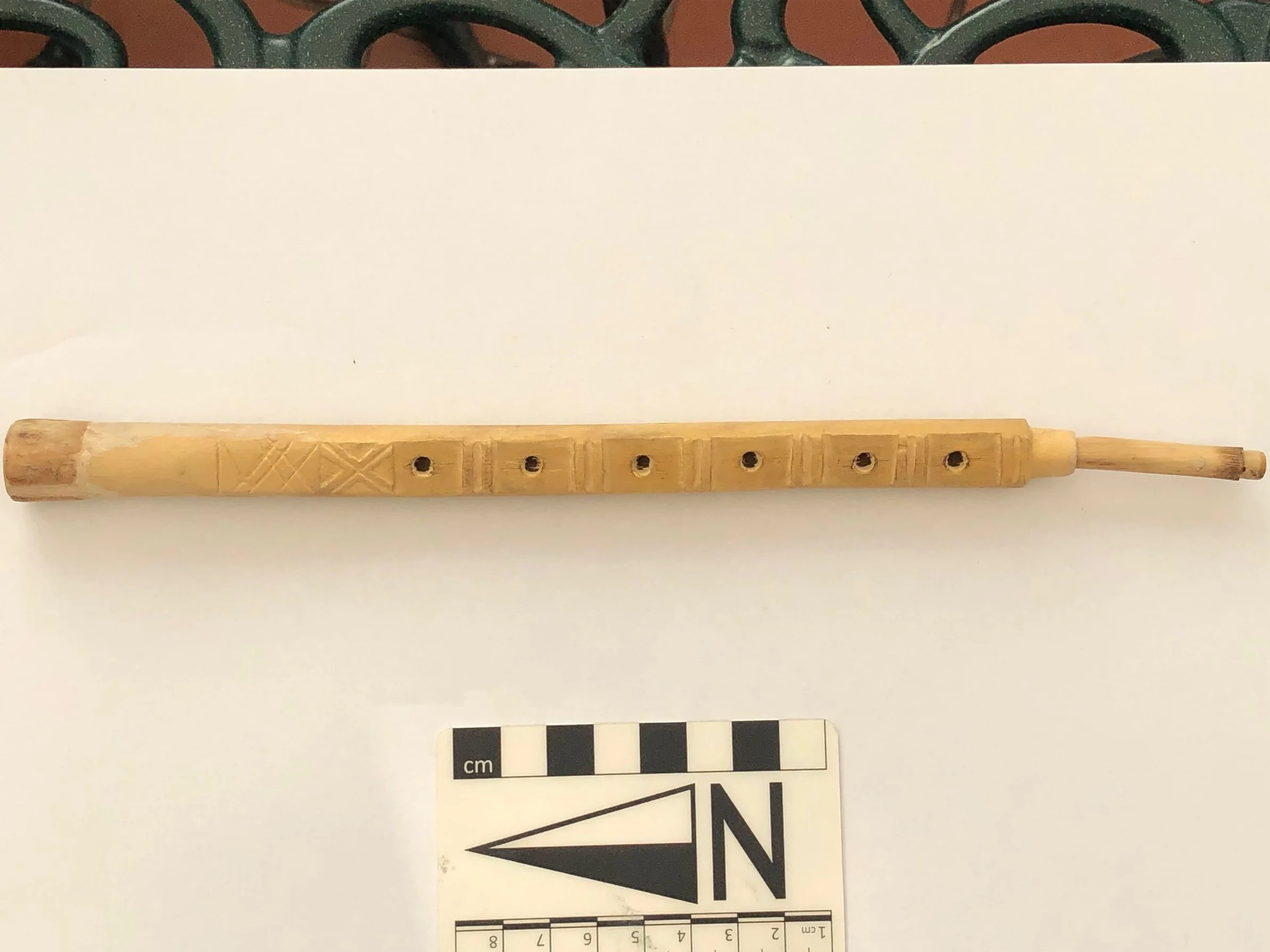Hornpipes
Archaeological finds in Viking Scandinavia show the hornpipe was present in Europe during this period. Similar to the modern Welsh Pibgorn, a hornpipe usually has a horn added at each end of a pipe, one to act as a bell and the other as a reed cap. The horns have generally not survived meaning in the archaeological record there are only the pipes, which generally feature a tenon at the ends for the attachment of a horn.
The Hornpipe-Style Instrument from York
Date: 866-1066 AD
Type of Wood: Elder
Location Found: Hungate, York
Type of Site: Urban
This wooden pipe, found in Hungate, York, features a tenon at one end and built-in bell at the other. Dated to 866-1066, from Anglo-Scandinavian York, this is the only wooden single pipe of this period from England. After the arrival of a large Viking army in 866, and subsequent battles, at some point between 878 and 890 the treaty of Alfred and Guthrum was signed, setting out the area to be ruled by Danelaw. Several of the instruments in this exhibition are from this period – when objects are from these areas, they are referred to as Anglo-Scandinavian.
Currently located in the collection of York Museums Trust.
Despite the broken nature of this find, it is believed to have been a hornpipe style instrument with a horn at the tenon end. This instrument represents the first with a built-in bell and tenon at the other found anywhere in the world. The fragmented nature of the find makes it difficult to know how many fingerholes the original may have had, but six may be a reasonable assumption. Played with a Phragmites australis reed, the recreation suggests a use more for entertainment than for a practical purpose such as signalling. It is unknown which end the reed went in. However, the sound is not hugely affected by the end the reed is in, although distance over which the sound travelled, and pitches vary. This, however, would also be affected by the reed type. Watch the videos to see what the instruments may have sounded like in both woodland and open area and the difference a horn used as a reed cap makes.
Recreation of the Hungate pipe as a hornpipe style instrument with a horn as a reed cap, played in woodland.
Recreation of the Hungate pipe as a hornpipe style instrument with a horn as a reed cap, played in open countryside.
Recreation of the Hungate pipe, played with no horn attached, as a wooden reed pipe, in woodland.
Recreation of the Hungate pipe, played with no horn attached, as a wooden reed pipe, in open countryside.
To continue exploring the wind instruments, click here.




